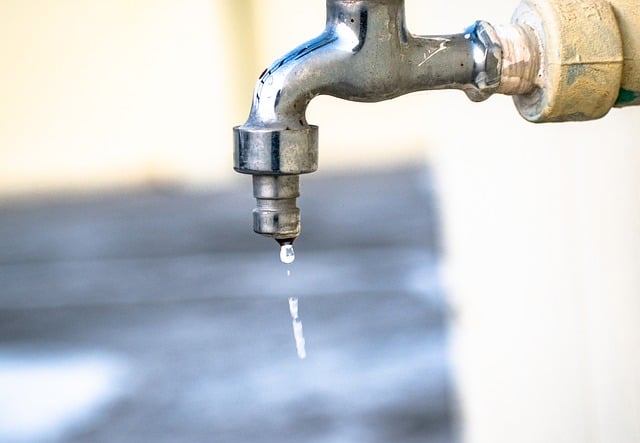Leaky faucets can be really frustrating to deal with: an endless loop of slow dripping, wasted water, and splashing. ‘
It’s a universal pet peeve and one of the most common reasons you pick up the phone and call the plumber.
At the same time, leaky faucets are some of the simplest and most straightforward plumbing problems. Sure, an expert will quickly fix it, but it’s also possible for you to learn how to fix it yourself.
So, let’s look at how to go about repairing it.
4 Types of Faucets
Generally, there are four types found in homes.
Fixing the leak differs for each of them, as each has some specific parts and components. Faucets still have some parts in common, as do other plumbing fixtures.
You want to watch out for the O-ring, which creates a seal between the faucet and its base, as well as the handles and valve stem.

Cartridge Faucets
The most common type. It uses a cartridge to control water flow and is easily repairable or replaceable. It’s also resistant to mineral buildup.
Disc Faucets
Almost as common as the first one. Ceramic discs control the water flow as they move against each other. They’re less prone to leaks than others but are more expensive.
Ball Faucets
They’re the least common type because they’re the most prone to leaks. The faucet’s mechanism involves a rotating ball to control water flow and is often tricky to repair.
Compression Washer Faucets
This type is reliable and popular. It uses a rubber washer, or its synthetic counterpart, neoprene, for water flow.
How to Fix a Leaky Faucet
Since different components pertain to different types, the ways through which we fix them vary. But it mostly comes down to the replacement of parts or quick tweaks with common tools. Take the opportunity to inspect every part throughout the process to rule out potential causes of the leak.
Before we begin, let’s follow a few steps to ensure a clean and easy operation. It’s also worth noting that while it’s valuable to know how to fix dripping faucets, you should save yourself the trouble if you’ve had your faucet for over a decade – it likely needs to be replaced anyway.
Deactivate the Water
Turn the H2O supply valve counterclockwise so that it’s off. It’s usually found under the sink. Be sure to test for water left over in the line by turning on the faucet. Then close it and proceed.
Plug the Drain
You want to plug your drain or lay out a towel in the sink in case parts like nuts and bolts fall through.
Disassemble the Faucet Handles
This goes for all types. You need to remove the handle(s) to be able to access the faucet’s internal mechanism.
- With a compression faucet, you’ll need to remove the packing nut, which is found around the stem, so it can prevent leaking.
- A ball faucet is trickier since there are more steps to removing the faucet. You’ll need an Allen wrench or screwdriver to loosen the screw on the side that locks it all together and then proceed to free the handle. Then you’ll have to remove the cap and collar to expose the internals of the faucet body. You’ll find seats and springs that need to be dislocated from the body, giving you access to the O-ring for inspection.
- The disc faucet is easier to deal with. Keep turning the handles counterclockwise till they come loose. You’ll likely find escutcheon caps, which are decorative plates, right under. Remove them as well to get to the cylinder discs. If they resist, carefully pry them off with an Allen key.
- Finally, the cartridge faucet. Pry off the handle caps, if any, and unscrew the handle itself. Use pliers with a compatible wrench to remove the retaining nut or clip, then use those same pliers to remove the cartridge.
Detach the Valve Stem
Remove the stem using a wrench to loosen the nut or collar around it. Depending on the faucet, you might run into parts you need to unscrew before freeing the stem.
Once that’s out of the way, pull the stem out gently with your hands or a pair of pliers. Be mindful of how much force you use to avoid damaging the stem or other parts. Try opting for a toothless wrench or the aptly designed valve stem removal tool.
Inspect the Parts of the Sink
You’ll now have exposed the parts which are the likely culprits of the leak. Check for signs of wear and damage, whether it’s the rubber, disc, cartridge, or ball.
If the parts have cracks or don’t fit where they’re supposed to, you probably must replace them because that usually causes a faucet to drip.
In the best-case scenario, they’re not damaged but became ineffective because of some dirt buildup. Clean them well before reassembling the faucet and testing this fix.
Replace the Damaged Parts
If the parts need replacement, it’s time for some shopping. Bring the original parts to the store to avoid getting the wrong sizes.
Use the opportunity to buy some plumber’s grease, aka silicone grease, to coat the parts before installing them. This heat-resistant agent will bump up your parts’ lifespans by reducing friction and wear.
Sanitise the Valves
While you’re at it, here’s another opportunity to further the longevity of your unit. Use some white vinegar and maybe some sanitising solution to clean the valve seat, faucet, and sink.
Soak a cloth in white vinegar and wrap it around the valve seat. After letting it sit for a few minutes, you’ll have taken care of any mineral and dirt buildups.
Next, get another cloth and rinse down the seat. You want to dip that cloth into some sanitising solution and scrub the faucet and sink. You’ll get that shine back while eliminating bacteria.
Put the Faucet Together
Now put it all back together. Always securely place back the screws and fasteners and ensure the O-rings are snuggly fitted into their grooves to restore that perfect seal.
Takeaways
See, it’s pretty straightforward. If you’re still experiencing leaks, maybe it’s time to call a professional plumber.
While you could’ve done everything right, the source of the issue might only be understood by an expert. Bringing in an expert will not only fix it but also give you a chance to learn about the problem, furthering your insight into how to repair a leaking faucet.
